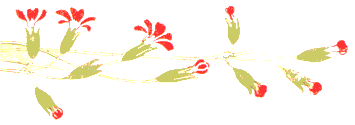

Krishna then relapsed into silence. But Arjuna who is the representative of all mankind on the battlefield between the higher and the lower impulses, prodded Him further. "Krishna! Who are those who experience both these, the destruction of grief and the attainment of bliss? Is it the Jivi or the Deha? Please elucidate."
Krishna replied, "Arjuna! The Kshethra or body is associated with the Gunas or attributes, Thamas, Rajas and Sathwa; so, the Jivi when in contact with it and when it identifies itself with the body, imagines that it is experiencing grief and joy which are the consequences of those Gunas. The Purusha or the Kshethrajna has no real relationship with the Gunas; he is just a witness. When iron is in contact with fire, then it has the power of scalding; but it is not iron that scalds, it is the fire. Through contact with Prakrithi, Purusha appears as the doer and experiencer."
"Therefore, it is not proper to infer that the Jivi is having grief and joy by the very fact of its occupying the body which is the vehicle of the Gunas. The earth sustains and helps the seed to grow into a tree or to decline. It is the Guna of the earth that causes these two. So also, the seed of Jeevathathwam grows and blossoms into Brahmathathwam in the body, which is the earth-principle. Just as manure and water are essential for the tree to bloom and bear fruit, Sathyam, Saantham, Samam and Damam are essential for the blossoming of the spirit into Atmic wisdom. The attributes or Gunas of Prakrithi make it assume multifarious forms."
"Think of this one point, then the whole problem will become clear. Man is happy at one time, miserable at another; he is afraid one moment and courageous at another. Why? Because he is shaped so by the Gunas. Do you say no? Then how can you explain these changes? They alone can transform man from one place to another like this."
"If the three Gunas, Sathwa, Rajas and Thamas are equally balanced, then there will be no change in him. This never happens; it is always out of balance. When one is dominant and the others are dormant, then Prakrithi makes him assume many roles. The three Gunas represent the three aspects of human nature. Rajoguna is the attachment that brings about desires and creates eagerness to enjoy the objective world that is 'seen'; it breeds desire for physical and heavenly pleasure. Thamoguna cannot grasp the reality; so it misunderstands easily and takes the false to be the true. It lands persons into negligence and error. It binds, instead of releasing. Sathwaguna controls the cause of grief and sorrow; encourages people to follow the path of real joy and happiness. Therefore, being single-pointed and unaffected by any of these three is the basis for purity and steadfastness."